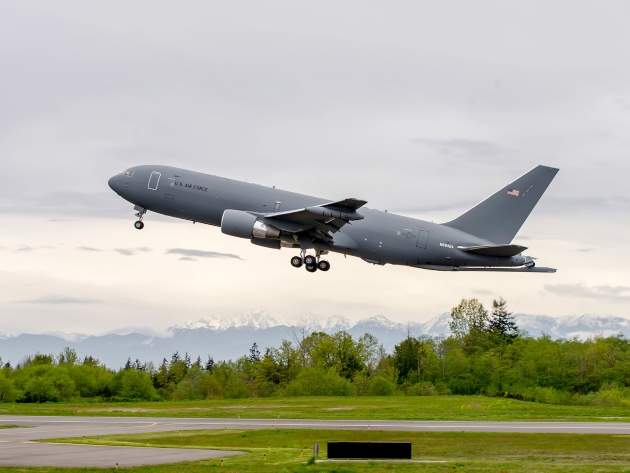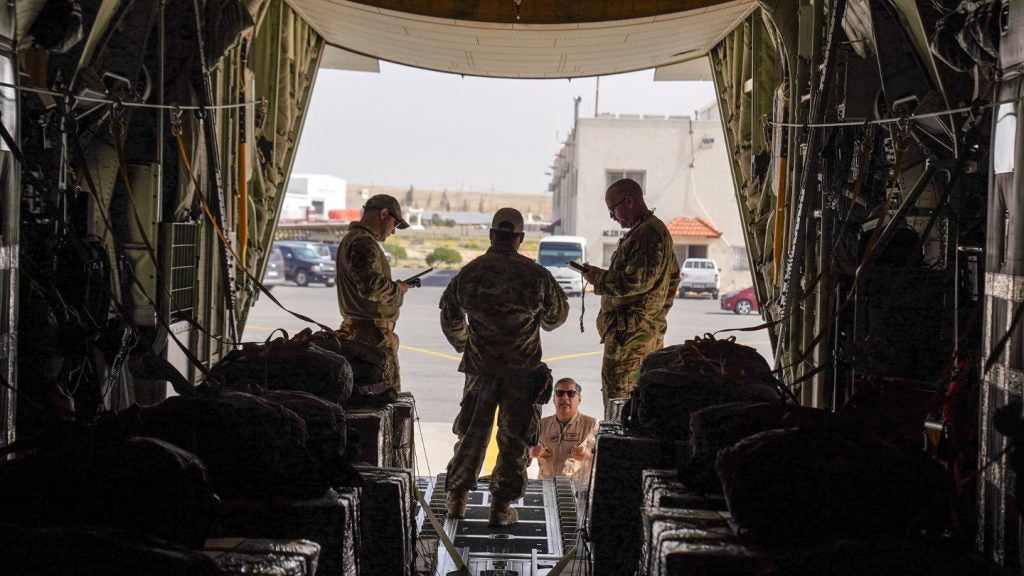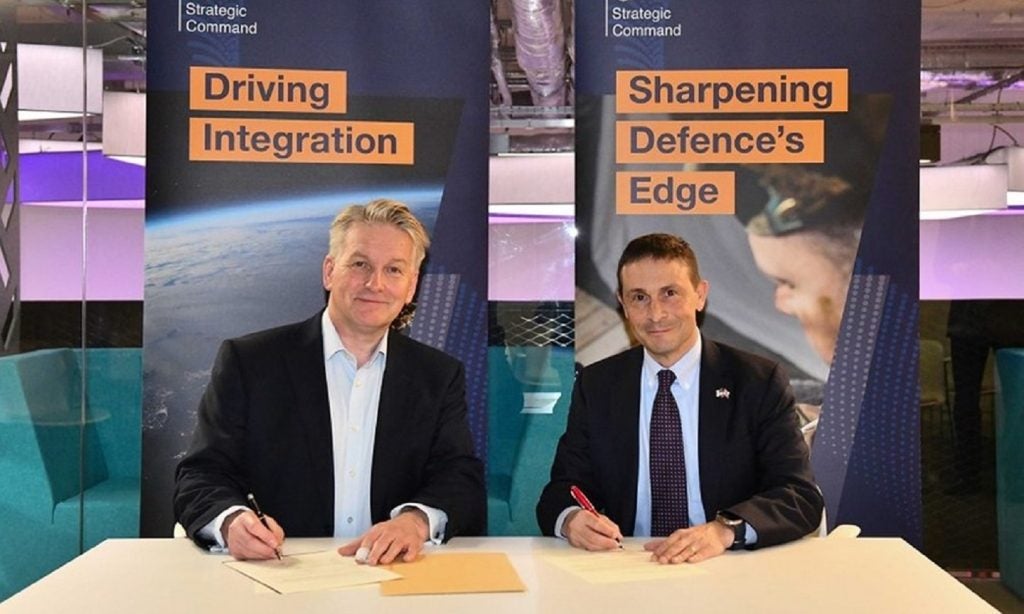
In April, comments made by the head of the US Air Mobility Command (AMC) to Bloomberg caused a stir among aviation commentators. Speaking about the challenge of first-generation tankers refuelling fifth-generation fighters, General Carlton Everhart was quoted as saying: “I’ve got airplanes with big fat bodies and long wings… The enemy doesn’t have to look for the fighter – he just has to look for me.”
Everhart was referring to the fact that fifth-generation fighters, such as the F-35 Joint Strike Fighter, which are equipped with sophisticated stealth capabilities, rely on the Air Mobility Command’s aerial refuelling tankers – the largest aircraft in the air force’s fleet – to achieve their missions. Without electronic cloaking technologies to shrink the profiles of aerial tankers on enemy radar, both the tanker and the fighter being refuelled are precariously susceptible to detection and attack by enemy forces.
Now you see me, now you don’t
In order to give refuelling tankers ‘stealth’ capabilities, Everhart envisions a technology that will enable the aircraft’s radar image or waveform to alter so that it appears to be in a different position, or is reduced significantly – all of which generally refers to survivability rather than true stealth or ‘cloaking’; and he is looking to industry in order to achieve such a capability for his fleet and shorten development times.
Low observability has been on the Air Mobility Command’s wish list for some time, although it is not a capability set to be rolled out with its newest tanker acquisition, the KC-46A Pegasus, 179 of which are to be built by Boeing by 2028. The KC-46A was acquired under the air force’s KC-X competition, the first of three programmes – with KC-Y and KC-Z to follow – that will keep the air force’s fleet refuelled over the coming decades.
However, back in September 2016, Everhart called for the air force to acquire more tankers by 2035, with an upgraded KC-46 proposed as an interim KC-Y capability and the future KC-Z acquisition, complete with more advanced capabilities, to be brought forward. The air force is assessing what these capabilities should be, but the goal is a low-observable tanker that can follow the F-35 into denied environments. This could include stealth, stand-off or penetrating capabilities – technologies that are being addressed by industry and government agencies such as the Defense Advanced Research Projects Agency (DARPA).
Blended wing
One technology that is gaining real traction is the blended wing body concept. Aircraft shape is a key factor in observability – for example, the F-35’s sleek external shape, with weapons and fuel carried internally, significantly contributes to its low observable stealth performance.
How well do you really know your competitors?
Access the most comprehensive Company Profiles on the market, powered by GlobalData. Save hours of research. Gain competitive edge.

Thank you!
Your download email will arrive shortly
Not ready to buy yet? Download a free sample
We are confident about the unique quality of our Company Profiles. However, we want you to make the most beneficial decision for your business, so we offer a free sample that you can download by submitting the below form
By GlobalDataBoeing and NASA researchers spent the latter half of 2016 testing a blended wing body (BWB) scale model. This unique concept – backed by its successful X-48B/C unmanned aerial vehicle flight test programme – forgoes the conventional tube and wing shape of traditional aircraft in favour of a triangular, tailless aircraft with a merged wing/body shape. This body shape, whether blended, merged or the very similar flying wing design, produces a low observable aircraft as the shape closely resembles the ‘infinite flat plate’ that has no angles to reflect back radar waves. Additionally, the blended wing design is highly efficient, with the entire aircraft body producing lift – as opposed to just the wings – resulting in a high lift-to-drag ratio that allows the wings themselves to be much smaller.
In September 2016, Boeing’s Phantom Works fixed wing assembly mobility senior manager, John Dorris III, said that Boeing “sees potential for a BWB-type aircraft to be developed in the next ten years as a subsonic transport, possibly beginning with military transport variants for airlift and aerial refuelling”.
He added: “By transferring technology and features from current Boeing programmes – like the C-17 and KC-46 – we’re able to address the US Air Force’s vision for 2030 and beyond; Boeing’s BWB concept can be scaled, with variants that will allow us to meet our customer’s mission requirements and fleet demands.”
Lockheed Martin is also dabbling in the blended wing concept, showing off a stealth tanker aircraft model at the American Institute of Aeronautics and Astronautics’ Science and Technology Forum and Exposition 2017. According to reports, the company is wind-tunnel testing a scale model of a hybrid wing body airlifter that could lead to the development of a tanker with a similar blended wing design.
Cloaking devices
The other major technology that can be exploited to virtually cloak or make aircraft ‘invisible’ is t the use of radar jamming systems. Jammers work by recognising radar signals and generating waveforms that jam them, to either render the aircraft ‘invisible’ to radar, or deceive the radar as to the actual location where the jammer – and aircraft – are located.
But as radar technology advances – sophisticated adversaries with advanced air defence systems can already examine signals from different perspectives and determine whether they are likely to be false – the methods used to jam radar signals are having to evolve quickly to stay one step ahead.
Raytheon is working on new cloaking device techniques based on cognitive electronic warfare. Development is focused on jamming technologies that can ‘learn and react’ during an engagement, effectively interpreting radar signals – even if they morph on the fly – and adapting to immediately generate a jamming waveform and keep aircraft hidden. This relies on creating jammers with more robust algorithms that can deal with unexpected threats.
According to the company, its development so far has produced the fundamental building blocks of a cognitive system, with engineers rapidly creating techniques and developing innovative solutions to overcome agile radars and handle uncertain and noisy inputs; and software capability has evolved to the point where systems can now address input signals that were not pre-programmed.
The application of these technologies and others like them have the potential to revolutionise the survivability of aerial tanker fleets. While industry and government agencies are understandably tight-lipped regarding the intricacies of jamming, cloaking and stealth technologies, there is enough chatter on the lines to suggest that this is a serious concern for the US Air Force as it looks toward the challenges of the coming decades, and that the industry is rising up to meet that challenge head on.





